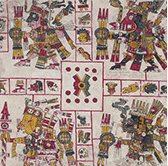CATALOGUE SECTION
A systematic catalogue was organized in the '20s, although a unified catalogue for printed materials had been hoped for a century before1. In 1928 the "modern" general catalogue of the printed books of the Library was set up; until then, the various collections had had separate catalogues, compiled within the context of each collection and according to different criteria. The Carnegie Endowment for International Peace contributed to the compilation of the new card catalogue, with the collaboration of the Library of Congress and the participation of important experts in library science from abroad2. In those years, the reading rooms and the stacks werereorganized. In 1931, the cataloguing rules of the Vatican Library (Norme per il catalogo degli stampati) were published for the first time; the third and last edition was published in 1949. The rules were based on the Anglo-american tradition with some local adaptations: for example, the Latin form was used for the names of Saints, Popes and classical and medieval authors, as well as for the Bible and for liturgical texts. It was a "dictionary catalogue" in which the cards are ordered by author, title, and subject in a single alphabetical sequence, such as encyclopedia entries. The catalogue was thus improved but the bibliographical descriptions were not adapted to the evolving international cataloguing rules. Bibliographical descriptions were entered on cards until 1985, when the catalogue was digitalized using the Canadian software GEAC8000. Since then, new acquisitions have been recorded electronically, the old local rules were revised, and the Library adopted the Anglo-American Cataloguing Rules (AACR2) with some local adaptations. MARC (USMARC, from 1999 MARC21) is used as format for bibliographical data, with a ISBD punctuation. In the early '90s, the Vatican Library promoted the creation of an on-line unified catalogue for humanistic research libraries in Rome, namely the URBS network. The digitalization of the existing card catalogue started in 1994, with the aid of external collaborators and the technical support of IBM Corporation. Since 2002 the Vatican Library was separated from the URBS network, in order to start the implementation of a RFID security and traceability control system with a Z39.50 connection to the local database.
BIBLIOGRAPHY
- M. Buonocore, Per un'edizione dell'inventario dei manoscritti e libri a stampa del cardinale Henry Stuart duca di York alla Biblioteca Apostolica Vaticana (Vaticani latini 14948-14949, 15169), Città del Vaticano 2002, in Miscellanea Bibliothecae Apostolicae Vaticanae IX (Studi e testi, 409)
- M. Buonocore, La biblioteca del cardinale Henry Stuart duca di York dal codice vaticano latino 15169, Città del Vaticano 2007 (Studi e testi, 440), pp. 7-33
- M. Buonocore – G. Cappelli, La biblioteca del cardinale Enrico Benedetto Clemente Stuart duca di York a Frascati, 1761-1803, Roma 2008
CONTACT DETAILS
- PERSON IN CHARGE Dr.Maria Giuseppina Cerri: contact by email
- Telephone: +39/06698.79458
- Fax: +39/06698.79437
- OFFICE: contact by email





